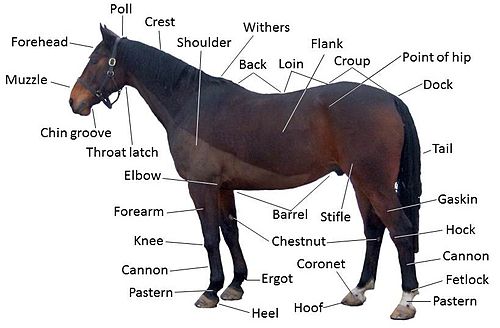My boots came!! Don't they look amazing?
First quiz in college and look at that score! I got a 100%.
We have some annoying and creepy rodents around campus. In the trashcan just outside our dorm there is always a squirrel eating something there. Today as we walked by there was a squirrel sitting just inside the trashcan eating a walnut. It really scared us as he just sat there watching us walk by.
Next quiz in college coming up on Tuesday. I need to know all these parts and more, not so bad right now. I got them all down and I could tell you them all and some more information if you would like. Time and the quiz will tell just how well I know my horse anatomy and skeleton.
Today in animal handling Dr. Kerns was telling us about different procedures and patients he had to deal with; they were so cool. He was telling us about a lady that called him and said that she thought her horse had some disease or issue with is coat. When he showed up the miniature horse had 11 inch hair in the middle of July. Most definitely there was something wrong! The miniature pony had cushings disease.
One of my favorite stories was about a really talented and show horse. The horse seemed to always colic when at a competition or show. Dr. Kerns would treat him for colic and then he would be fine until the next show. All the colic episodes continued for several years and then finally the time came for the colic that would kill him. They felt something wrong in his cecum. Dr. Kerns and his team made an incision in the horse's side and filled 7.5 garbage buckets (like the one below) with waste.
That wasn't it, they also found a solid, smooth ball. This ball is called an enterolith or intestinal stone. Lodged inside this horse's small intestines was a 9.75 pound intestinal stone. The record is 11 pounds. Dr. Kerns had a picture of him holding the stone; it was humongous! Found in the middle of the stone was some bale twine. The bale twine had attracted and caused minerals to collect around it; which is the definition of an enterolith. I find this so fascinating!
Here's a picture of a horse enterolith that I found off of Google.
One of Dr. Kerns biggest pet peeves is when students come up to him and say "my horse has a temperature!" His thought process and annoyance is that "every horse has a temperature! Even a dead horse has a temperature equivalent to the room." So instead of saying "my horse has a temperature" we are supposed to specify that "my horse has a raised temperature or fever." Be specific and clarify!






I think you got the squirrel thing from. Remember the one that got into your bedroom and your Build-a-bear dog?
ReplyDeleteI think you mean Cushings Disease. Cushion disease is when they turn into a pillow! Can't stop laughing!
Okay, so how come the horse would only have colic at a show and not any other time? Glad I did not have to clean up that mess!